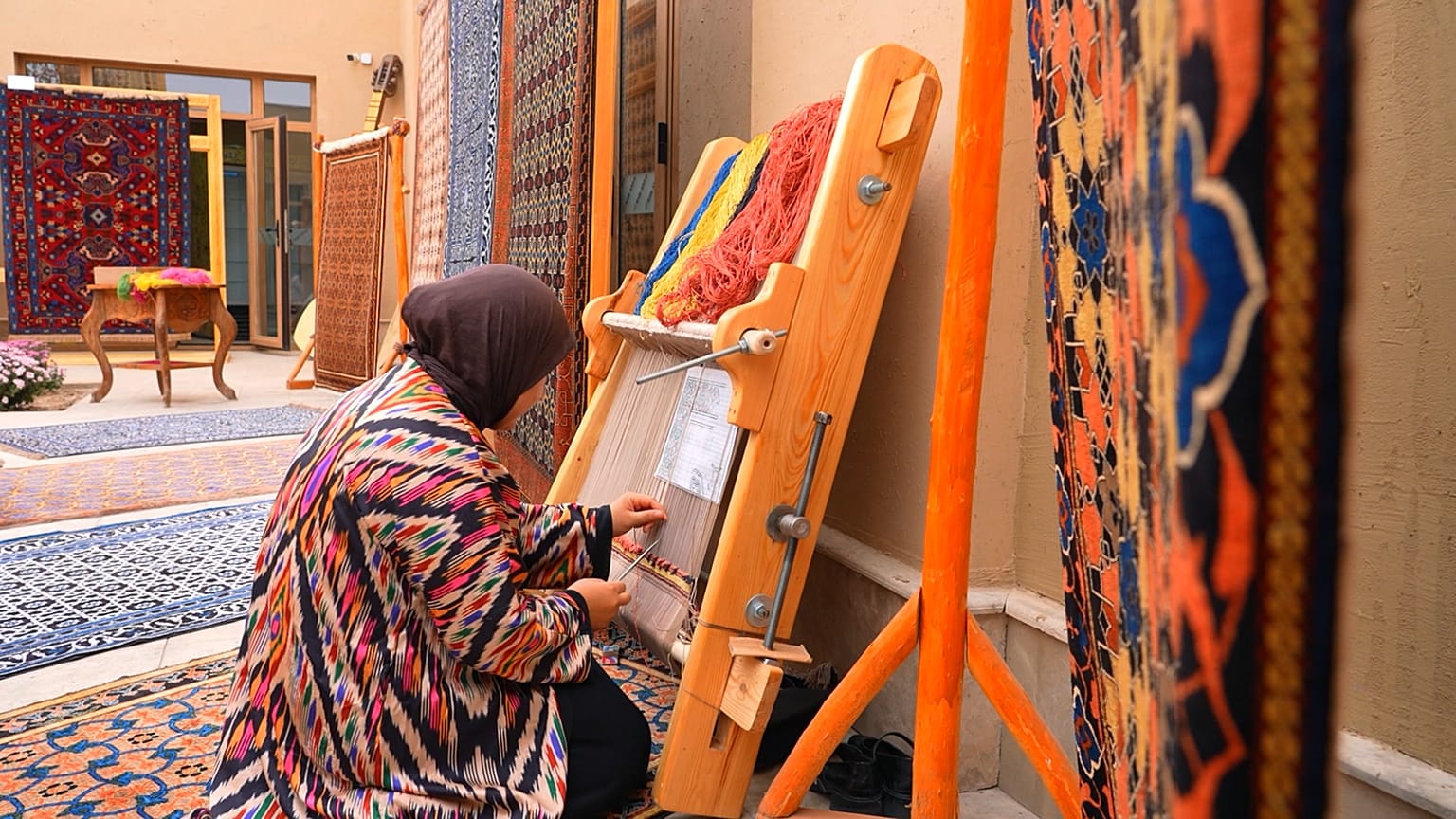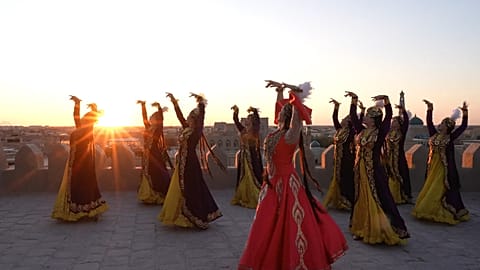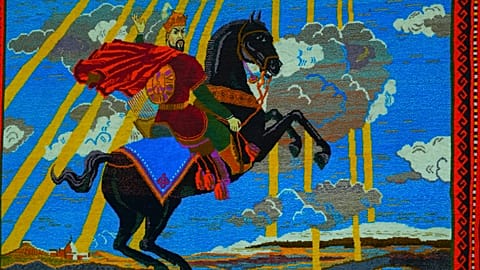Uzbekistan’s artisans preserve centuries-old Silk Road traditions, weaving wool and silk into carpets that reflect history, culture and craftsmanship.
Along the ancient Silk Road, the cities of Uzbekistan continue a centuries-old craft — weaving carpets by hand. Each carpet is created knot by knot, using techniques passed down through generations. More than decoration, each one expresses culture, history and identity.
In Khiva, master craftsman Madrid Matkarimov explains that every piece requires care and heart. “Weaving a carpet by hand is not just work. It’s art. You have to put your heart into it,” he says. That commitment is evident in every Uzbek carpet, reflecting patience, heritage and craftsmanship.
The Steppe tradition
Uzbek carpets carry the cultural legacy of the steppe. For centuries, nomadic communities used wool and natural dyes to express their beliefs, weaving symbolic motifs into each piece.
Elmira Gyul, chief research fellow at the International Research Institute of the Silk Road, says the classic Uzbek carpet is “a legacy of the semi-nomadic steppe culture — a woollen carpet whose patterns reflect the worldview of the steppe. That is why there are so many horn and claw motifs — symbols rooted in steppe cosmology. The cross, as a solar symbol, represented the god Tengri, worshipped by the nomads.”
These interpretations reflect a wider Central Asian tradition in which animal and solar motifs symbolised protection, fertility and harmony with nature. These motifs are more than decoration; they embody prayers, beliefs and cosmology passed through generations. Each carpet tells a story that is both personal and communal, linking contemporary craft to ancient belief systems.
Khiva: Colours of the earth
In Khiva, colour doesn’t come from tubes or chemicals — it grows from the soil itself. Matkarimov explains the intricate process of natural dyeing. “Indigo is used for blue. From indigo and pomegranate together, we get green. There is also the root of the rubia plant — from Afghanistan — and we use it to make red dye. Walnut shells give brown, and from apple, grape, mulberry and red onion peel, we obtain yellow.”
He gestures toward a hanging carpet, whose weave is dense and even. “It takes eight months to weave this carpet. Another one took 16 months. The process depends on the colours, the design and the complexity.”
In Khiva, carpets are not merely crafted — they are cultivated, one patient thread at a time. Every year, the city celebrates the International Carpet Festival. Master weavers from across Uzbekistan and beyond gather to display their creations, each piece shimmering like a story retold in colour.
During the event, known locally as Gilamlar Jilosi (‘Splendour of Carpets’), Khiva opens its ancient gates to the world. Weaving here is part of daily life — steady, patient and deeply rooted. The carpets reflect the landscape itself, echoing the soft tones of sand and sky, the precision of tradition, and the quiet pride of those who keep it alive.
Samarkand: Silk and precision
In Samarkand, silk carpets glow with colour and precision. Workshops are designed to allow natural light, helping weavers work with accuracy.
Abdulahad Badghisi, manager of the “Music for the Eyes” workshop, explains the careful balance of focus and care: “With natural light, we can see the colours better. We take breaks every 15 minutes because weaving requires concentration. Without pauses, mistakes happen, and it takes longer to finish the carpet. Proper rest actually speeds up the work.”
Here, carpets are the result of both skill and discipline. Persian influences meet steppe traditions in intricate patterns, creating a design language unique to Samarkand. Workshop managers emphasise that the focus and mood of weavers directly influence the quality of each carpet.
Bukhara: Tradition and innovation
Bukhara’s carpets combine traditional designs with contemporary colour palettes. Weaver Sabina Burkhanova explains: “A Bukhara carpet typically features red with geometric patterns made from silk. Many designs trace back to Zoroastrian traditions, honouring fire and the sun. Our work updates these patterns with modern colours while preserving their history.”
In Bukhara, carpets are woven with deliberate care. Motifs are elongated and precise, echoing centuries of craft while adapting to modern aesthetic sensibilities. Workshops here demonstrate the balance between preserving heritage and fostering innovation.
Preserving a living tradition
Across Uzbekistan, from Khiva’s earthy tones to Samarkand’s silk carpets and Bukhara’s bold reds, weaving remains a living tradition rather than a historical relic. Each carpet is a reflection of culture, skill, and history, capturing both the heritage of the Silk Road and the creativity of contemporary artisans.
The craft is labour-intensive, demanding patience, precision and inherited knowledge. Despite the challenges, Uzbekistan’s carpet industry continues to thrive. In every workshop, in every knot, the Silk Road legacy remains alive, linking centuries of craft to the present.


















